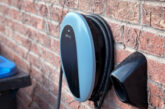
Julian Grant, General Manager at Chauvin Arnoux, recounts a recent project where the use of energy logging equipment assisted an electrical installer in helping their client avoid an expensive mistake.
It doesn’t happen very often, of course, but sometimes when a client asks you to quote for a project, they have every bit of information you need to get on with a job. Or do they? It’s always worth asking where the information came from, and checking whether it really is reliable, as is shown by this cautionary tale.
Solar so good
Nimbus Hosting, a specialist in eco-friendly web hosting, had installed solar panels on the roof of its premises and the installers had, as you would expect, provided a monitoring system so that Nimbus could see just how much of the company’s energy requirements the panels were providing. The news was good – most days there was apparently a big surplus of energy from the panels.
Rather than re-export this surplus to the grid, Nimbus decided to install a battery system to store the surplus energy so that it could be used to power the company’s operations through the night.
To provide the battery system, Nimbus called in Cambridge-based Artisan Electrics, providing Artisan’s engineers with a full year of data for energy usage and solar panel output, all produced by the monitoring system provided by the original solar panel installers.
To ensure that the project would run smoothly, Artisan’s engineers carried out a preparatory on-site inspection, and made a surprising discovery: the CTs measuring the power used by Nimbus had been installed in a sub-distribution board rather than in the main board and were, therefore, only seeing part of the load. In reality, Nimbus was using far more energy than the monitoring system was recording, which immediately opened up the question of whether the solar panels really were producing surplus energy.
Evaluating energy usage
To answer this question, the Artisan engineers temporarily installed a Chauvin-Arnoux PEL103 portable energy logger in the Nimbus main distribution board. Thanks to its flexible CTs and easy-to-fit voltage leads, this took only a few minutes. The PEL measured and recorded accurate and reliable information not only about energy usage, but also about many other factors relating to the building power supply including, for example, phase voltages and currents, harmonics, power factor and much more.
After the PEL had collected data for a week, the Artisan engineers carried out a preliminary analysis. This showed that there was rarely a surplus of energy from the solar panels during the working week, but that there was a small surplus at weekends. Monitoring over a longer period confirmed these results but it was noted that the measurements were made during late autumn, and the results would probably be somewhat better in summer, with stronger sunlight for longer hours.
That, however, wasn’t all that the results from the PEL103 revealed. They also showed that the building heating system was being left on over the weekends, wasting a large amount of power. This issue was quickly addressed!
The PEL103 results also showed that there was a large imbalance in phase currents in the Nimbus premises, with one phase being almost twice as heavily loaded as the other two. If a battery system were to be fitted, this would need to be taken into account as, with such a large imbalance, a standard three-phase system would be unsuitable and three separate single-phase systems would have to be used instead.
Recommendation for rectification
Based on data provided by the PEL, the Artisan engineers were able to make important recommendations to Nimbus. The first was that with the present solar installation, adding batteries was likely to produce little benefit. However, Nimbus has roof space to fit more solar panels and, if this were done, installing batteries would probably be worthwhile – subject to confirmation by accurate measurements with a PEL, of course!
The second recommendation was that Nimbus should consider rearranging the loads on its power system to provide a better balance between phases. A well-balanced system is always desirable as it makes it less likely that cables and other equipment will be overloaded and, an additional benefit in the case of Nimbus is that, were batteries to be installed, a balanced load would make it possible to use a simpler and less costly three-phase system.
By being cautious about relying on unchecked data, by carrying out a careful inspection of the existing installation prior to making changes, and by making careful measurements with a reliable instrument, Artisan was able to prevent its client from making the costly mistake of installing batteries that would provide no real benefit.
Instead, the Artisan engineers identified ways in which Nimbus could save energy, improve the performance of its power system and, with a little additional investment, move closer to its aim of powering its business exclusively with solar energy.
View the Chauvin Arnoux PEL103 Portable Energy Logger technical data sheet here















